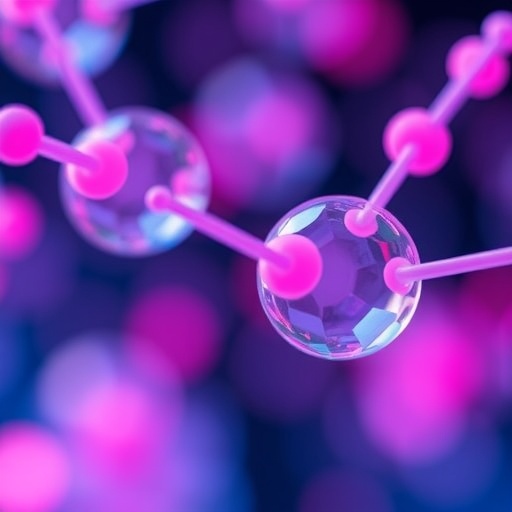In the evolving landscape of biomedical materials, renewable polymers derived from natural sources have attracted significant scientific interest. The quest for sustainable and biocompatible materials has positioned polymers such as vegetable-derived cellulose, bacterial cellulose, chitosan, and starch at the forefront of cutting-edge research. These biopolymers exhibit inherent properties—including biodegradability, renewability, and minimal toxicity—that render them particularly suitable for applications in controlled drug delivery and regenerative medicine. However, the journey from promising laboratory discovery to market-ready biomedical product still faces formidable hurdles.
Recent literature underscores that despite the progressive strides made in extracting and modifying natural polymers, only a handful have successfully transitioned into commercially available biomedical materials. A comprehensive review by Lopes and colleagues sheds light on the strategies necessary to navigate the complex path toward clinical adoption. Chemical modification techniques are pivotal in tuning the physical, chemical, and biological characteristics of these polymers to meet stringent regulatory and functional requirements. By altering molecular weight, crystallinity, or introducing cross-linking agents, researchers aim to optimize mechanical strength, degradation rate, and bioactivity to suit specific therapeutic needs.
One of the primary challenges in scaling up these materials lies in balancing biocompatibility with manufacturability and economic feasibility. Natural polymers often suffer from batch-to-batch variability due to their biological origin, which complicates standardization and quality control processes necessary for medical-grade materials. Furthermore, ensuring consistent purity and the absence of immunogenic contaminants necessitates robust purification and characterization protocols. These factors collectively contribute to the protracted timeline and elevated costs associated with bringing renewable polymer-based biomaterials to market.
The intrinsic properties of renewable polymers offer unique advantages in drug delivery systems. Their capacity to be engineered into hydrogels, films, or nanoparticles allows for precise modulation of drug release kinetics—ranging from immediate to sustained delivery. For instance, chitosan’s positive charge facilitates electrostatic interactions with negatively charged drugs or biological membranes, enhancing mucoadhesion and absorption. Meanwhile, bacterial cellulose’s nano-fibrillar network provides an exceptional scaffold for cell proliferation, making it an attractive candidate for tissue engineering applications.
Moreover, the biodegradability of these polymers directly addresses concerns associated with traditional synthetic polymers, which may accumulate in the body and pose long-term toxicity risks. Renewable polymers naturally degrade into non-toxic metabolites, aligning with the body’s physiological processes and reducing the likelihood of chronic inflammation or immune rejection. This attribute is especially critical in regenerative medicine, where the material must support tissue growth before gracefully resorbing into the host.
Despite these promising qualities, clinical translation demands rigorous validation of the polymers’ safety and efficacy. Preclinical in vitro and in vivo studies must demonstrate biocompatibility, absence of genotoxicity, and predictable degradation profiles. The need for standardized testing frameworks—capable of accommodating the complexities of natural polymers—has become a major focus in biomedical materials research. These validations, in turn, inform regulatory submissions and compliance with governing bodies such as the FDA or EMA.
Economic viability is another decisive factor influencing market adoption. The sourcing of raw biomaterials from renewable resources must be sustainable and scalable without impinging on food supply chains or biodiversity. Advances in biotechnology, such as microbial fermentation and enzymatic synthesis, show promise in enhancing yield and purity while lowering production costs. Additionally, integration with green chemistry principles ensures that the environmental footprint of polymer production remains minimal, thereby satisfying growing regulatory and societal demands for eco-friendly healthcare products.
Collaborative efforts between academia, industry, and regulatory agencies are essential to accelerate the translation process. Innovative approaches involving tailored chemical modifications, hybrid composites combining synthetic and natural polymers, and 3D-printing technologies for personalized medicine exemplify the dynamic research underway. These interdisciplinary endeavors aim to bridge gaps between laboratory innovation and clinical reality, ensuring that renewable polymers fulfill their potential in revolutionizing biomedical therapies.
The comprehensive analysis by Lopes et al. highlights a multi-faceted roadmap towards commercialization, emphasizing not just the material properties but the entire lifecycle from fabrication to clinical implementation. By identifying bottlenecks in scalability, reproducibility, and regulatory compliance, the work provides a valuable blueprint for stakeholders invested in sustainable biomaterial development. It also encourages ongoing exploration of emerging polymers and novel chemical strategies to expand the toolbox available for biomedical applications.
Future prospects in the domain of renewable polymers are buoyed by rapid advancements in characterization techniques, enabling finer control over polymer architecture and functions. High-resolution spectroscopy, advanced microscopy, and computational modeling collectively facilitate the design of next-generation biomaterials with bespoke properties. Such innovations promise to enhance therapeutic outcomes, minimize adverse effects, and reduce production costs—yet maintaining a careful balance between complexity and practicality remains paramount.
Ultimately, the integration of renewable polymers into mainstream biomedical practice will depend on the confluence of scientific rigor, technological innovation, and market readiness. While challenges persist, the ongoing research momentum and growing environmental consciousness signal that these materials will play an increasingly vital role in the future of healthcare. As research continues to unveil new modification methods and application modalities, the dream of delivering safer, more effective, and sustainable biomaterials is steadily becoming a tangible reality.
Subject of Research: Not applicable
Article Title: Renewable Polymers in Biomedical Applications: From the Bench to the Market.
News Publication Date: 12-Jun-2024
Web References: http://dx.doi.org/10.32604/jrm.2024.048957
Keywords
Biochemistry, Environmental chemistry, Green chemistry, Biomaterials, Materials engineering, Polymers




